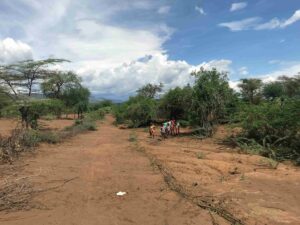
Restoring grassland by managing invasive tree species in Tanzania
The Prosopis or mesquite tree (Prosopis juliflora) originates from South America and was introduced in parts of Africa for fighting desertification. However, the mesquite tree has severe economic and environmental impacts in Tanzania. It takes over pastoral grasslands and its deep roots use groundwater. Goats and sheep get injured by its thorns.
The r4dWoody Weedsproject supports local communities in developing and implementing sustainable land management strategies against invasive species. The decision making process involves local communities and other stakeholders and also ensures women’s participation. Manual and chemical methods were tested for removing mesquite trees and re-establishing grassland.
This video-clip was produced as part of the r4d programme Digital Storytellers synthesis project. Its contents were filmed and selected by René Eschen from CABI Switzerland in collaboration with local partners in Tanzania. The digital storytelling process was accompanied and supported by Paitití Lab.Watch on YouTube.
Related Posts
The Green Vein: Agroecology Rising in West Africa
WOMEN EMPOWERED: Vital Work Made Visible
Sources
Contact:
René Eschen, r.eschen@cabi.org, CABI Switzerland
Project:
r4d project Woody invasive alien species in East Africa (WoodyWeeds); http://woodyweeds.org/; http://www.r4d.ch/modules/ecosystems/invasive-species;
Credits:
A film by René Eschen, CABI Switzerland, John Richard, Tanzania Forest Research Institute, Charles Kilawe, Sokoine University of Agriculture, Tanzania / Edited by Martin Moll / Produced by Sonja Schenkel, Paitití Lab
More posts from this r4d project:
Digital Storytellers video-clip How can we manage invasive weeds in arable lands?; Articles (German only) Der Teufelsbaum aus Amerika verdrängt die traditionelle Weidelandschaft; Sandra Eckert: «Wenig betroffene Flächen sind am schwierigsten zu bestimmen.»





